Conference Presentations by Michael Saker

The mobile web has provided new way of engaging with space and place, just as it has allowed new ... more The mobile web has provided new way of engaging with space and place, just as it has allowed new social connections and digital communities to emerge. The development of location-based social networks (LBSNs) is predicated on what de Souza e Silva (2006) refers to as ‘hybrid space’. This ‘hybrid space’ is actualised when digital and physical spaces are combined. LBSNs move beyond earlier text message-based social networks, like Dodgeball, utilising the GPS functionality of smartphones to allow users to digitally mark their geographic position. A good example of an LBSN is Foursquare; combining features traditionally associated with social-networking sites alongside elements of play. Importantly Foursquare lets people share their physical location with friends by “checking-in”, which has implications for social groups. The visualisation of surrounding social connections, as well as “unknown others” (de Souza e Silva and Sutko, 2010), through this application, has the potential to impact how people coordinate social interactions, forge new social ties and conceptualize communities. While many studies have explored mobile phones and sociability (Ling, 2004; Ling and Yttri, 2002), there is a lack of empirical research examining these issues in the context of LBSNs and communities. Based on original qualitative interviews with a range of Foursquare users this paper explores Foursquare and communities in two ways. Firstly it examines whether this LBSN is used to coordinate social interactions, and if so, how these interactions are subsequently impacted. Secondly, it investigates whether Foursquare and its various communicative affordances leads to the development of new social relationships.

The mobile web has provided new way of engaging with space and place, just as it has allowed new ... more The mobile web has provided new way of engaging with space and place, just as it has allowed new social connections and constellations to emerge. The development of location-based social networks (LBSN) is predicated on what de Souza e Silva (2006) refers to as ‘hybrid space’. This ‘hybrid space’ is actualised when digital and physical spaces are combined. LBSN move beyond earlier text message-based social networks, like Dodgeball, utilising the GPS functionality of smartphones to allow users to digitally and spatially mark their location in the form of check-ins; check-ins that can then be seen by friends as well as stored for future reference and algorithmically realised place-based suggestions. A good example of such an LBSN is Foursquare; combining features traditionally associated with social-networking sites alongside elements of play. A body of research now surrounds LBSN and location-based play, examining impact on areas such as identity (Schwartz & Halegoua, 2014; Cramer et al., 2011), the gamification of everyday space (Licoppe & Inada, 2008) and more broadly speaking, the importance of location in a ‘networked world’ (de Souza e Silva & Gordon, 2011). Reporting on original qualitative research encompassing a number of interviews with foursquare users, I argue that Foursquare at the same time is employed by some users to archive their day-to-day spatial movements; impacting how said users then experience and temporally engage with space and place. This thesis is further developed along three lines. Firstly, gathered ‘memories’ can be considered accumulatively, as a ‘residual abundance’ (Virilio, 1997: 24; italics in original), enabling users to effectively visualise periods of their past, before interrogating them from various vantage-points, in line with the information required. Secondly, the past in its collective and spatially detailed form has the potential to be shared with others, and thus re-enacted at a later date, with this potentiality being the source of its significance, as opposed to the reality of said re-enactments taking place. Lastly, the spatial past is algorithmically employed by Foursquare itself, to deliver personalised place-based information that feels more pertinent, personalised and authentic than, say, a guidebook. In sum then, it is my proposal that Foursquare, and in a broader sense LBSN, can significantly affect how users experience space, place and its connection to time, by allowing the locational past to be reimagined in the present.

Smartphones and location-based social networks (LBSN) are altering how people engage with space, ... more Smartphones and location-based social networks (LBSN) are altering how people engage with space, place and each other. Foursquare is a LBSN that moves beyond earlier text message-based mobile social networks like Dodgeball; combining playful elements with features traditionally associated with social-networking sites. Reporting on original qualitative research encompassing a number of interviews with foursquare users, I argue that foursquare can modify how people experience their environments, just as it can impact how they engage with one another. Drawing on de Souza e Silva & Hjorth’s (2009: 606) discussion of flânerie as a ‘method for conceptualizing the role of play in contemporary urbanity’, alongside Luke’s (2006) reworking of the flâneur as ‘phoneur’, I introduce the ‘playeur’ as being a more suitable way of approaching how foursquare is presently disrupting day-to-day life. Ordinary space, when considered through the lens of foursquare, is simultaneously a space of play, replete with symbolic possibility. This challenges traditional understandings of play and its suggested separation from ordinary life (Caillois, 1958/2001; Huizinga, 1938/1992). Consequently users find themselves moving through their surroundings following different routes, going to spaces and places they otherwise wouldn’t, while becoming more aware of the environments they most often frequent and what these connections mean to them. At the same time, users also find their social networks are correspondingly developed through the banter and bragging play can produce. In sum then, it is my proposal that foursquare, and in a broader sense pervasive play, can significantly deepen and strengthen physical, spatial and social relationships.

Location-based applications (LBAs), such as foursquare, which in part revolve around play, have t... more Location-based applications (LBAs), such as foursquare, which in part revolve around play, have the potential to both forge new relationships with space and place, as well as create new axioms of sociality. Importantly, this challenges older theories surrounding play; specifically Huizinga’s concept of the ‘magic circle’, whereby play is effectively posited as being abstracted from the space of “ordinary” life. In its turn, foursquare significantly casts a light on the merging of these two supposedly separate spaces, through ‘the overlapping of ludic governance on existing environments with established accoutrements of cultural conventions’ (Moore, 2011: 374); eliciting new social and spatial effects in the process. Indeed, symptomatic of the play of foursquare, users are now moving through their urban environments in an altered fashion; procuring different and perhaps deeper spatial connections with the spaces and places they most often frequent. At the same time novel forms of social engagement are being developed; undergirded by the ludic symbolism LBAs permit. Following this, I will outline an updated understanding of play, and with it an updated position on ‘magic circles’; one more suited to approaching the kind of play endemic of foursquare, whereby the division between “ordinary” life and play is effectively blurred, in terms of effect, while interestingly felt, regarding its qualitative difference; an important caveat that casts a more balanced light on the talismanic and duplicitous quality of play.
Papers by Michael Saker
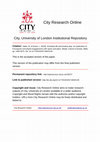
Foursquare is a location-based social network (LBSN) that combines gaming elements with features ... more Foursquare is a location-based social network (LBSN) that combines gaming elements with features conventionally associated with social networking sites (SNSs). Following two qualitative studies, this article sets out to explore what impact this overlaying of physical environments with play has on everyday life and experiences of space and place. Drawing on early understandings of play, alongside the flâneur and ‘phoneur’ as respective methods for conceptualizing play in the context of mobility and urbanity, this article examines whether the suggested division between play and ordinary life is challenged by Foursquare, and if so, how this reframing of play is experienced. Second, this article investigates what effect this LBSN has on mobility choices and spatial relationships. Finally, the novel concept of the ‘phoneur’ is posited as a way of understanding how pervasive play through LBSNs acts as a mediating influence on the experience of space and place.

Pokémon Go is a hugely popular hybrid reality game (HRG) that enables players to occupy a space t... more Pokémon Go is a hugely popular hybrid reality game (HRG) that enables players to occupy a space that is simultaneously physical and digital. The general aim of Pokémon Go is to discover and then capture Pokémon. This article reports on an original research project designed to explore the impact of Pokémon Go on spatiality and sociability. The project was conducted between May 2017 and July 2017, using an online survey which received 375 responses from users of Pokémon Go geographically spread across the globe. Drawing on the concept of the “playeur” as an established approach to understanding the effects of locative play on spatiality and sociability, this research follows three lines of enquiry. First, the research examines whether the intermingling of play and ordinary life might encourage players to spend more time outside in public spaces, and how this mode of play is experienced. Second, the research explores whether the game mechanics of Pokémon Go might lead players to traver...

ACM Transactions on Social Computing
Studies of identity and location-based social networks (LBSN) have tended to focus on the perform... more Studies of identity and location-based social networks (LBSN) have tended to focus on the performative aspects associated with marking one's location. Yet these studies often present this practice as being an a priori aspect of locative media. What is missing from this research is a more granular understanding of how this process develops over time. Accordingly, we focus on the first 6 weeks of 42 users beginning to use an LBSN we designed and named GeoMoments . Through our analysis of our users' activities, we contribute to understanding identity and LBSN in two distinct ways. First, we show how LBSN users develop and perform self-identity over time. Second, we highlight the extent these temporal processes reshape the behaviors of users. Overall, our results illustrate that although a performative use of GeoMoments does evolve, this development does not occur in a vacuum. Rather, it occurs within the dynamic context of everyday life, which is prompted, conditioned, and medi...
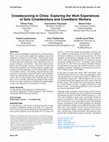
Proceedings of the 2020 CHI Conference on Human Factors in Computing Systems
Recent research highlights the potential of crowdsourcing in China. Yet very few studies explore ... more Recent research highlights the potential of crowdsourcing in China. Yet very few studies explore the workplace context and experiences of Chinese crowdworkers. Those that do, focus mainly on the work experiences of solo crowdworkers but do not deal with issues pertaining to the substantial amount of people working in 'crowdfarms'. This article addresses this gap as one of its primary concerns. Drawing on a study that involves 48 participants, our research explores, compares and contrasts the work experiences of solo crowdworkers to those of crowdfarm workers. Our findings illustrate that the work experiences and context of the solo workers and crowdfarm workers are substantially different, with regards to their motivations, the ways they engage with crowdsourcing, the tasks they work on, and the crowdsourcing platforms they utilize. Overall, our study contributes to furthering the understandings on the work experiences of crowdworkers in China.
Behaviour & Information Technology

Media, Culture & Society
Virtual Reality (VR) has traditionally required external sensors placed around a designated play ... more Virtual Reality (VR) has traditionally required external sensors placed around a designated play space. In contrast, more recent wired and wireless systems, such as the Oculus Rift S (released in March 2019) and the Oculus Quest (released in May 2019) use cameras located on the outside of these devices to monitor their physical position. Users can now mark out a physical space that is then digitally tracked within their display. Once a play space has been established, users are alerted if they come close to breaching this boundary by the visual inclusion of a grid. Should this threshold be breached, the headset display shifts to an image of the surrounding concrete environment. We contend that physical space is increasingly being incorporated into the digital space of VR in a manner that meaningfully differs from older systems. We build our argument in the following way. First, the article explores how theories surrounding VR have implicated only a limited relationship with physical...
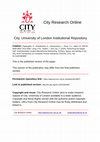
ACM Transactions on Computer-Human Interaction (TOCHI)
Expressions of territoriality have been positioned as one of the main reasons users alter their b... more Expressions of territoriality have been positioned as one of the main reasons users alter their behaviors and perceptions of spatiality and sociality while engaging with location-based social networks (LBSN). Despite the potential for this interplay to further our understanding of LBSN usage in the context of identity, very little work has actually been done toward this. Addressing this gap in the literature is one of the chief aims of the article. Drawing on an original 6-week study with 42 participants utilizing a bespoke LBSN entitled “GeoMoments,” our research explores the following: (1) the way that territoriality is linked to self-identity; and (2) how this interplay affects the interactions between users as well as the environments they inhabit. Our findings suggest that participants affirmed their self-identity by selectively posting and claiming ownership of their neighborhood through the LBSN. Here, the locative decisions are made related to risk, hierarchies, and the user...
First Monday
Yik Yak was a location-based social application that allowed users to anonymously create, read, a... more Yik Yak was a location-based social application that allowed users to anonymously create, read, and respond to posts made within a few mile radius. This paper reports on six months of ethnographic work and interviews performed with 18 Yik Yak users. We argue that one of Yik Yak’s primary functions was to communicate about place and to find new ways to connect abstractly with the local social situation. The data detailed in this article contributes to the growing literature on the spatial and social impacts of locative media.
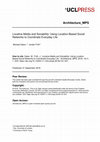
Architecture_MPS
Foursquare was a mobile social networking application that enabled people to share location with ... more Foursquare was a mobile social networking application that enabled people to share location with friends in the form of “check-ins.” The visualization of surrounding known social connections as well as unknown others has the potential to impact how people coordinate social encounters and forge new social ties. While many studies have explored mobile phones and sociability, there is a lack of empirical research examining location-based social network’s (LSBNs) from a sociability perspective. Drawing on a dataset of original qualitative research with a range of Foursquare users, the paper examines the application in the context of social coordination and sociability in three ways. First, the paper explores if Foursquare is used to organize certain social encounters, and if so, why. Second, the paper examines the visualization of surrounding social connections and whether this leads to “serendipitous encounters.” Lastly, the paper examines whether the use of Foursquare can produce new ...
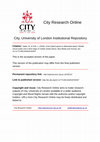
New Media & Society
Research in the field of mobile communication studies (MCS) has generally moved away from focusin... more Research in the field of mobile communication studies (MCS) has generally moved away from focusing on how mobile phones distract users from their physical environment to considering how the experience of space and place can be enhanced by locative smartphone applications. This article argues that trajectory may be complicated by the emergence of a new type of mobile technology: mobile virtual reality (MVR). While an increasing number of handsets are specifically developed with MVR in mind, there is little to no research that situates this phenomenon within the continuum of MCS. The intention of this paper is accordingly twofold. First, the article conceptualizes MVR as a connective tissue between the two sequential tropes of MCS: physical distraction and spatial enhancement. Second, the article introduces the concept of ‘dislocated space’ as a way of understanding the embodied space MVR might configure.

Mobile Media & Communication
Pokémon Go is a hugely popular hybrid reality game (HRG) that enables players to occupy a space t... more Pokémon Go is a hugely popular hybrid reality game (HRG) that enables players to occupy a space that is simultaneously physical and digital. The general aim of Pokémon Go is to discover and then capture Pokémon. This article reports on an original research project designed to explore the impact of Pokémon Go on spatiality and sociability. The project was conducted between May 2017 and July 2017, using an online survey which received 375 responses from users of Pokémon Go geographically spread across the globe. Drawing on the concept of the “playeur” as an established approach to understanding the effects of locative play on spatiality and sociability, this research follows three lines of enquiry. First, the research examines whether the intermingling of play and ordinary life might encourage players to spend more time outside in public spaces, and how this mode of play is experienced. Second, the research explores whether the game mechanics of Pokémon Go might lead players to traver...










Uploads
Conference Presentations by Michael Saker
Papers by Michael Saker